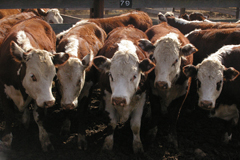
Anthrax is a bacterial disease that targets sheep, cattle and other hoofed herbivores (grass eating animals) like goats and horses. Occasionally anthrax infects humans. Anthrax is a rare hazard for anyone who works with livestock or their by-products including farmers, abattoir workers, tanners and veterinarians.
Farmers and abattoir workers are more at risk than the general population. The cutaneous (skin) ulcer form is the only type recorded in Australia. There have been three cases affecting humans since 2001, all caused by exposure to anthrax spores. There have also been sporadic outbreaks in grazing animals during this time.
Anthrax occurs mainly in the pastoral areas of NSW, Northern Victoria and Gippsland.
Symptoms in Humans
Symptoms of anthrax include:
- Fever
- Headache
- Cough
- Skin Lesions
- Joint pains
- Chest pain
- Vomiting
- Flu-like symptoms (eg. fever, chills, headache, runny nose, sore throat)
Fast facts:
- Anthrax can occur in sheep and cattle and can occasionally be passed to humans.
- Do not butcher or conduct a post mortem on any suspected animal cases as this will cause massive environmental exposure from anthrax spores.
- If you suspect you have been exposed to an anthrax infected animal, seek veterinary and medical advice immediately.
References used for this topic page
More information:
Department of Primary Industries (NSW)
Anthrax
Better Health Channel
Anthrax
Clinical care:
Centers for Disease Control (US)
Fact sheet: Anthrax information for health care providers
NSW Health
Anthrax control guidelines
Department of Health (Vic)
Guidelines for Infectious Diseases: Anthrax
Research & reviews:
World Health Organization (WHO)
Anthrax
|
|